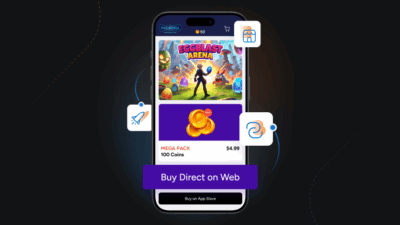You’ve done it! After who knows how many clicks in their journey, a customer has reached your product page. They’ve scrolled through the product images, and now it’s time for the moment of truth—they’re going to read your product description.
Will your product description be enticing enough to get your customer to click “Add to Cart?” Or will the customer leave your product page more confused than when they arrived?
We all hope we get more “Add to Cart” than bounces. So here are our top six tips to write product descriptions that drive conversions and increase revenue.
1. Focus on information
When it comes to writing product descriptions, information is king. By including relevant, useful information about your product, you look more professional and establish trust with your customers.
Keep your descriptions are clear and simple. If you have a complicated product, don’t fill your product descriptions with industry jargon and complicated terms only your developers understand. Include terms and phrases your customers will understand and will help them make an informed purchase decision.
And while your product descriptions need to be full of essential information, you still want to use your brand’s voice. If your brand voice is funny and quirky, your product descriptions should sound funny and quirky, too, while being informative.
2. Know your audience
To write great product descriptions, you have to know more than just the product. As you write your descriptions, think about what your customers are most concerned about. Do they worry about ease of use? Are they concerned about the difficulty or time needed to install your software? Do they have questions about compatibility? How does your product compare with your competitors?
Once you know what your customers are thinking, you can write descriptions that include features and benefits that address their concerns. For example, here are some ways you can think about different aspects of your descriptions:
· Features – Pick your customers’ top three highest valued features to highlight in your description.
· Advantages – Describe how your product stacks up against competitors.
· Solutions – Explain how your product solves a problem or makes their life easier.
As you write product descriptions, keep your buyer personas in mind. This will ensure you write descriptions that address their needs and wants.
3. Make it scannable
This is rule #1 for all web copy, and product descriptions are no exception. People want to be able to quickly scan the product description and get the information they need without having to read every word.
That means you need to break up your copy with:
· Headings and subheads
· Short sentences
· Bullet points
See what I did there? And just like news articles, put the most important details first.
Speaking of clear and concise copy, that brings us to our next point …
4. Keep it short
While we understand that some complex products may require longer descriptions, there are still techniques you can use to make it feel shorter than it actually is. (See “Make it scannable” above.) The last thing you want on your product page is a giant wall of text that makes your customers bounce to your competitor’s site.
Just remember the “miniskirt rule”—make it long enough to cover the important stuff and short enough to keep it interesting.
If you find that there is too much important information, and your product description is becoming a novel, you may want to consider including in-text links to blog posts or videos on your site that explain more complex details. Just make sure your links open in a new tab so users can easily navigate back to your product page.
5. Highlight the benefits
We tend to think of product descriptions in terms of features, but we shouldn’t. Customers don’t care about features, they care about how your product is going to benefit them.
As you write your product descriptions, think, “How will my product make their life better?” Will your product save them time? Save them money? Simplify a process?
To demonstrate the difference between features and benefits, here is an example from SuperSnorkel’s product description:
· Feature – Full face mask
· Benefit – Easy breathing
· Feature – Seamless contoured lens
· Benefit – See more wildlife
· Feature – Soft, adjustable straps
· Benefit – More comfort, less adjustment
Remember, lead with the benefit, then use your product features as evidence.
6. Don’t forget SEO
While we usually think of product descriptions in terms of the customer, they’re also super important for SEO. Search engines are spidering your product pages for relevant information, so make sure you provide it.
According to selling experts who work with Amazon, there is some evidence that placing keywords in product descriptions — especially in bullet points — increases search rankings.
So, in order to get the most traffic possible to your product pages, include keywords in your product titles and in the body of your product descriptions.
Now that you have all our product description secrets, you’re one step closer to writing descriptions that your customers can’t resist.
![[Customer Story] Why TestDome Considers FastSpring a Real Partner](https://fastspring.com/wp-content/themes/fastspring-bamboo/images/promotional/2023/FastSpring-TestDome-blog-thumbnail.jpg)








